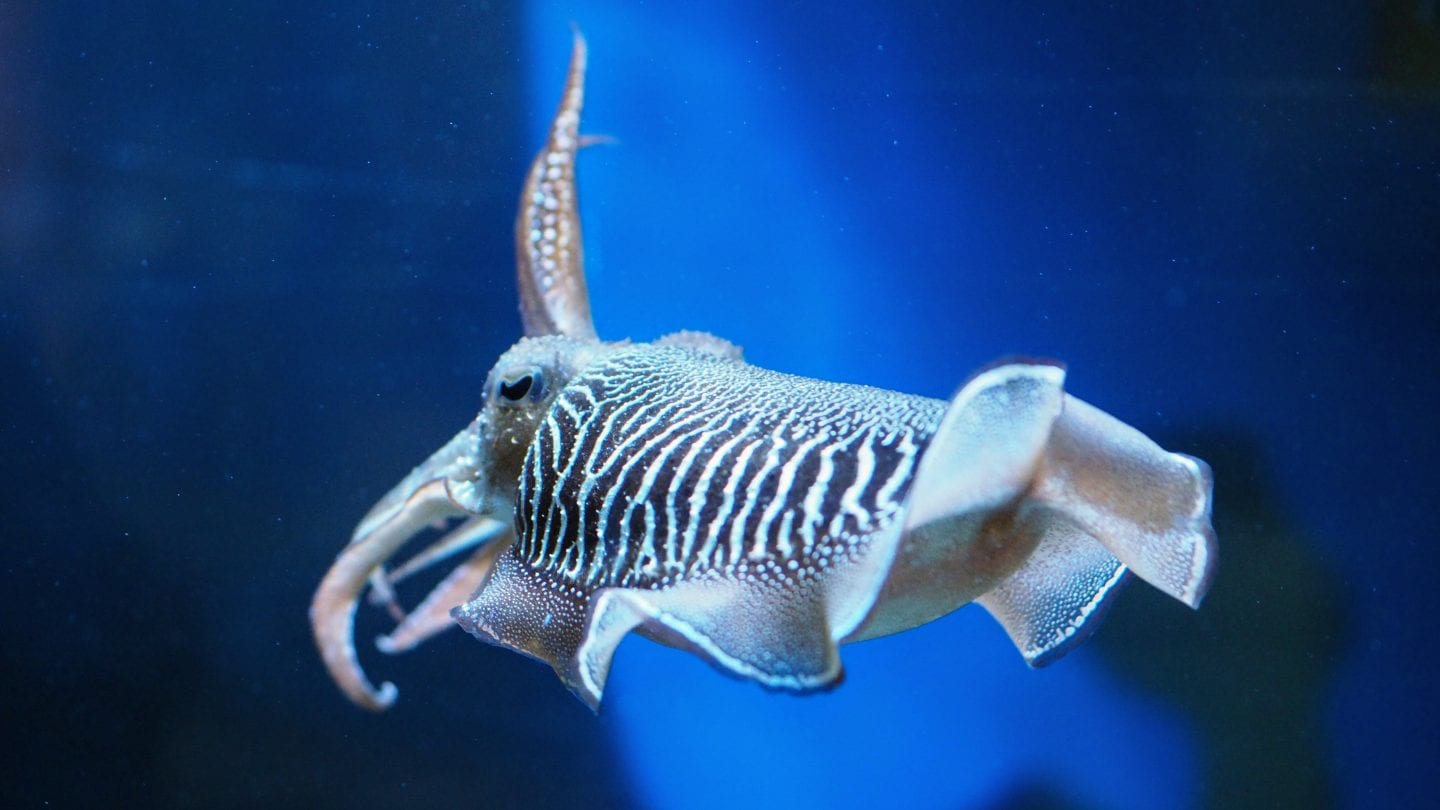Send Light Signals in the Visible Spectrum
The visible spectrum is the portion of the electromagnetic spectrum that the human eye can detect. Visible light can be thought of in two ways–light as illumination (such as that used by fireflies) and colors that result from light being absorbed or reflected. Living systems use light for a variety of purposes. Sometimes, they use it to make themselves highly visible (like a peacock showing off his brilliant feathers to a potential mate). Other times, they use it to become virtually invisible (like an owl hiding in plain sight when it rests during the day). When a living system sends a light signal, it must create that light or color in an energy- and material-efficient way. Living systems create and enhance color using such strategies as non-toxic pigments, structures that bend and absorb different wavelengths, and chemical processes that create bioluminescence.
Coevolve
Multiple living systems sometimes have such a close relationship that they end up evolving together; this is called coevolving. Coevolution occurs when changes in one living system’s genetic makeup results in changes in the other. Coevolution can result from positive, mutually-beneficial relationships. It can also result from negative relationships, such as that between a virus and its host. The host changes to avoid the virus’ harmful effects, which in turn causes a change in the virus so it can continue to predate on the host, and on through time.
Modify Concentration (of Ions, Solutes, Etc.)
Modifying the concentration of chemical constituents in solution or in materials allows for controlling the outcome of chemical processes or the functional characteristics of materials. For example, sulfur groups have an affinity for dissolved calcium ions. When oysters secrete a self-assembling organic matrix decorated with immobilized sulfur groups, they attract and concentrate calcium ions in the surrounding seawater. In turn, the high concentration of positively charged calcium ions attract negatively charged carbonate ions which triggers the stepwise formation of amorphous, and then crystalline, calcium carbonate.
Regulate Cellular Processes
Cells are the basic building blocks of all living systems, so cellular processes dictate how physiological processes occur within those systems. Cells (whether entire unicellular organisms or parts of multicellular living systems) grow, metabolize nutrients (that is, chemically transform them), produce proteins and enzymes, replicate, and move. Cells as part of multicellular systems rarely act alone, instead having ways to signal to start and complete simple to quite complex interactions. How skin heals is a good example of the role of cellular processes. Blood cells called platelets release clotting factors to stop the bleeding; white blood cells rid the area of foreign materials and release molecules to coordinate healing; cells called fibroblasts start rebuilding using proteins called collagen; new blood vessels form; and skin cells called keratinocytes create the new surface.





